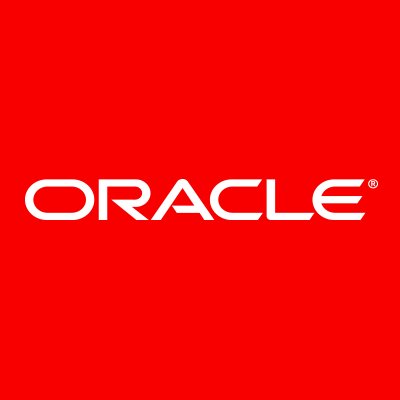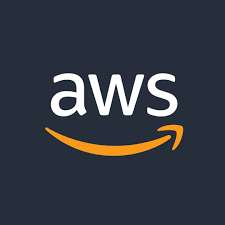In the realm of cloud computing, two giants stand out: Oracle and Amazon Web Services (AWS). Both companies offer comprehensive cloud solutions, but their approaches, strengths, and target markets differ significantly. This comparative analysis delves into the key features, benefits, and strategic positions of Oracle and AWS to help businesses make informed decisions when choosing a cloud provider.
Overview
Oracle Cloud Infrastructure (OCI)
Oracle Cloud Infrastructure (OCI) is designed to provide high-performance computing and database services with robust security and scalability. It caters to enterprises looking for an integrated cloud solution that supports mission-critical applications and databases.
Amazon Web Services (AWS)
AWS, a subsidiary of Amazon, is a pioneer in the cloud computing industry and offers a vast array of services ranging from computing and storage to machine learning and artificial intelligence. AWS is known for its extensive global infrastructure, innovation, and broad customer base.
Key Features and Services
Compute Services
Oracle offers a range of compute options, including bare metal servers, virtual machines, and dedicated virtual hosts. These options provide high performance and flexibility, with bare metal instances offering direct access to physical servers for maximum performance.
AWS provides a wide variety of compute services through its EC2 instances, which come in numerous configurations tailored to different workloads. AWS also offers container services (ECS, EKS), serverless computing (Lambda), and outposts for on-premises integration.
Storage Solutions
Oracle’s storage solutions include block storage, object storage, and archive storage. OCI’s block storage is known for its high IOPS performance, making it suitable for database and enterprise applications.
AWS offers a comprehensive suite of storage services, including S3 for object storage, EBS for block storage, and Glacier for archival storage. AWS also provides storage gateways for hybrid cloud solutions and extensive data transfer options.
Database Services
Oracle’s strength lies in its database offerings, with Oracle Autonomous Database and Oracle Exadata Cloud Service leading the charge. These services offer high performance, automation, and robust security features.
AWS provides a variety of database services, including RDS for relational databases, Aurora for high-performance relational databases, DynamoDB for NoSQL, and Redshift for data warehousing. AWS’s database services are known for their scalability and ease of use.
Networking
Oracle offers advanced networking capabilities with high-throughput, low-latency connections, virtual cloud networks (VCNs), and FastConnect for dedicated, private connectivity to OCI.
AWS has a comprehensive set of networking services, including VPC for isolated cloud resources, Direct Connect for dedicated network connections, and global content delivery through CloudFront. AWS’s extensive global network infrastructure ensures low latency and high availability.
Security and Compliance
Oracle emphasizes a security-first approach, with features like encryption at rest and in transit, isolated network virtualization, and comprehensive identity and access management (IAM). OCI also complies with numerous industry standards, such as GDPR, HIPAA, and SOC.
AWS offers a broad range of security services, including IAM, encryption services, security monitoring, and compliance certifications across various regulatory standards. AWS’s security measures are highly customizable to meet specific customer requirements.
Performance and Reliability
Oracle Cloud Infrastructure is designed for high performance, especially for database workloads. Oracle’s autonomous capabilities ensure optimal performance by automating tuning and maintenance tasks.
AWS is renowned for its reliability and performance across a wide range of services. Its global infrastructure includes multiple availability zones and regions, ensuring high availability and fault tolerance.
Pricing and Cost Management
Oracle positions OCI as a cost-effective solution, particularly for enterprises running Oracle workloads. OCI’s pricing model is straightforward, with predictable costs and significant savings for long-term commitments.
AWS offers a complex pricing model with numerous options for cost savings, such as reserved instances and savings plans. While AWS provides extensive cost management tools, the pricing structure can be challenging to navigate, especially for new users.
Ecosystem and Integration
Oracle’s ecosystem is robust, particularly for enterprises using Oracle applications and databases. OCI offers seamless integration with Oracle’s suite of enterprise applications, such as Oracle E-Business Suite, PeopleSoft, and JD Edwards.
AWS boasts a vast ecosystem with thousands of third-party integrations, partner solutions, and a vibrant community. AWS Marketplace offers a wide range of software and services that integrate seamlessly with AWS infrastructure.
Customer Support and Service
Oracle provides comprehensive support services, including dedicated account managers and advanced customer support options. Oracle’s support is tailored to enterprise needs, ensuring high-touch service for critical applications.
AWS offers multiple support plans, ranging from basic support to enterprise-level assistance with dedicated account managers and technical support. AWS’s support ecosystem includes extensive documentation, training resources, and a large community of users and experts.
Innovation and Future Vision
Oracle is focused on integrating advanced technologies such as AI, machine learning, and automation into its cloud services. Oracle’s vision includes expanding its autonomous capabilities and enhancing its cloud infrastructure to support next-generation workloads.
AWS continues to lead in cloud innovation, regularly launching new services and features. AWS invests heavily in emerging technologies, such as quantum computing, AI, and IoT, and aims to provide cutting-edge solutions for a broad range of industries.
Choosing the Right Cloud Provider
The decision between Oracle Cloud Infrastructure and Amazon Web Services depends on various factors, including existing infrastructure, specific workload requirements, and long-term business goals.
Use Cases and Target Markets
Oracle Cloud Infrastructure is particularly well-suited for enterprises with existing Oracle workloads, complex database needs, and requirements for high performance and security. Industries such as finance, healthcare, and government benefit from OCI’s robust capabilities and compliance features.
AWS’s broad service portfolio and global presence make it a versatile choice for a wide range of use cases, from startups and SMEs to large enterprises. AWS excels in supporting innovative applications, such as serverless computing, big data analytics, and machine learning.
When to Choose OCI
If your organization heavily relies on Oracle databases and enterprise applications.
If you need high-performance computing for mission-critical applications.
If integrated autonomous capabilities and robust security are top priorities.
When to Choose AWS
If you require a broad range of cloud services and global infrastructure.
If your business needs extensive support for innovative technologies and applications.
If you prefer a mature, well-established cloud ecosystem with a wide range of third-party integrations.
Both Oracle and AWS offer powerful cloud solutions, each with unique strengths and advantages. By carefully evaluating your organization’s needs and strategic objectives, you can choose the cloud provider that best aligns with your goals and sets you on the path to success in the digital age.



Comments